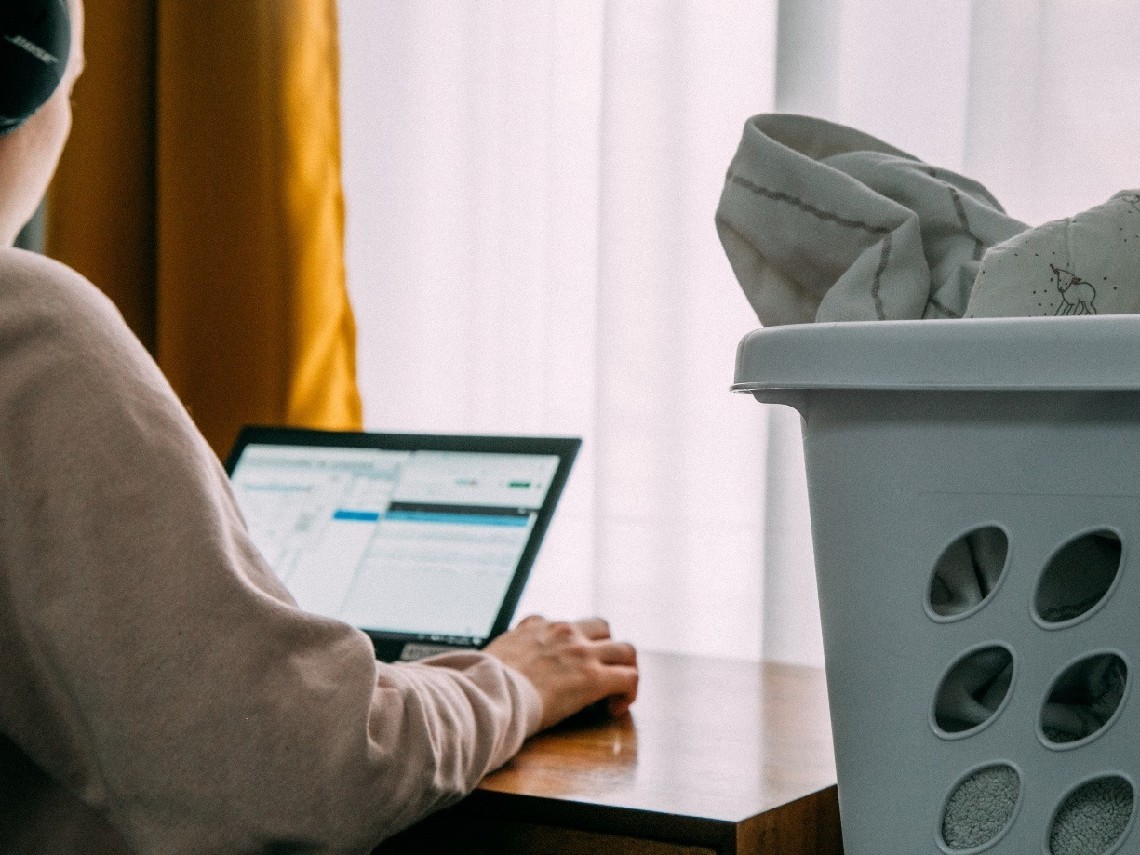
Happy New Year to you and welcome to the new lockdown, where we are expected to work from home (WFH) if we can. While some people love WFH, some find it hard to start and others find it hard to stop and let the workflow into their personal time. In this post I’ll be offering some tips to help those who are finding it hard to leave work at the door at the end of the day.
Define your workspace
If you can, create a space that’s just for work. If having one set place for work doesn’t fit with your set up at home, try having one or two spaces where you do not work. That way, when it all gets too much, at least you’ll have somewhere to escape to that is not associated with work.
Have a starting work routine
Maybe it’s putting your power Zoom meeting top on, stacking the breakfast dishes in the dishwasher, getting a cup of coffee, and then sitting down at your computer, whatever works for you, try to do those activities in the same way each day. The point behind this is to switch your brain into “work” time.
Get the most important things done
If there’s anything that will definitely stop you from being able to leave work at work it’s having loose ends, especially when that involves some of the most important tasks on your to-do list for the day.
Since there’s always going to be more to do, and there’s always that one last thing- tying things up isn’t about getting everything done. What’s important is that you tie up the biggest priorities and get the things that are most likely to keep you awake at night, completed. This way, no matter how many other things are still on your to-do list, you’ll feel a lot less stressed and better able to switch off.
Think about communication
During the hours when you want to focus on the job, try to reduce your personal communication. For example, you could group together answering non-urgent personal messaging to a few times during your working day. Once the working day ends, avoid work emails, and only answer work messages in the evening if they are absolutely necessary.
Set an end of day routine
Your end of day routine should start at least 30 minutes before you need to end work. It could include doing a final check to make sure that all essential emails have had a response, reviewing your task list to know that you have completed what’s essential, and writing the plan for the next working day.
That includes knowing the time of your meetings, deciding what projects you will work on, and being clear on when you will do tasks like answering email.
Decide on your boundaries
Create rules or guidelines to protect yourself from yourself. Whatever you decide, the most important thing is that you’re comfortable with it and stick to it. Some examples might include:
- I don’t work later than 5pm/ 6pm / 7pm- unless of a specific extenuating circumstance
- I always stop and have dinner with my family
- I stop and have a workout at Xpm every day
- I never do work in bed- this includes checking emails on my phone
- I will not check emails after Xpm.
The exact times are not important. What matters is that you set some boundaries for the sake of your long-term health.
***
If you’re an employer with HR queries and problems, get in touch!
Sign up for our free resources and free weekly tip - subscribe here.
Phone 0345 644 8955
LinkedIn Russell HR Consulting
DISCLAIMER
Although every effort has been made to ensure the accuracy of the information contained in this blog, nothing herein should be construed as giving advice and no responsibility will be taken for inaccuracies or errors.
Copyright © 2021 all rights reserved. You may copy or distribute this blog as long as this copyright notice and full information about contacting the author are attached. The author is Kate Russell of Russell HR Consulting Ltd.
Latest blog posts
- Is There a Santa Clause?
06 / 12 / 2023
- Lend Us a Hand!
22 / 11 / 2023
- What Happens When There is a Clash in Protected Characteristics?
17 / 10 / 2023
- Encouraging a Healthy Workforce 2
21 / 09 / 2023
- Encouraging a Healthy Workforce
23 / 08 / 2023
- What a Disaster - (But We Have a Cunning Plan!)
20 / 07 / 2023
- It’s Time We Stiffened the Sinews
14 / 06 / 2023
- Why Is It So Important to Develop Emotional Resilience?
16 / 05 / 2023
- When is a discretionary bonus not discretionary?
20 / 04 / 2023
- Recovering Training Costs 15 / 03 / 2023
